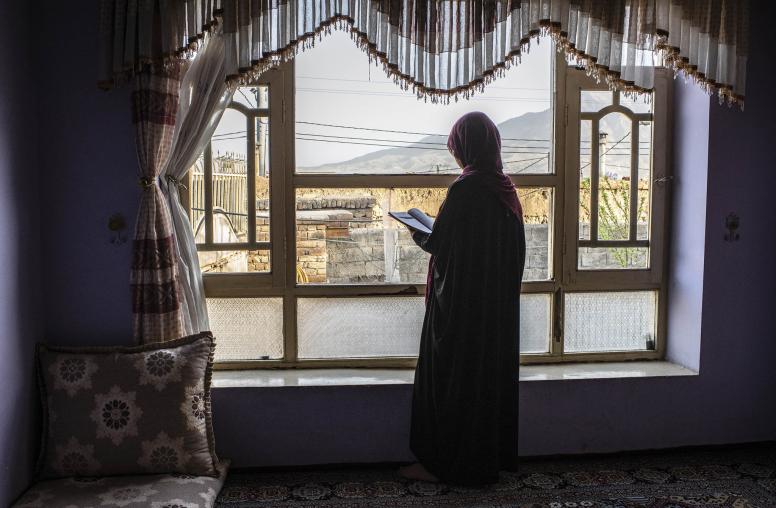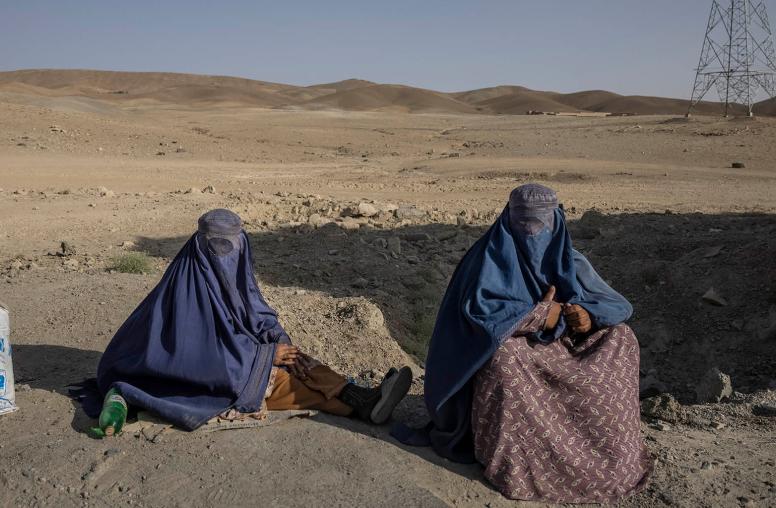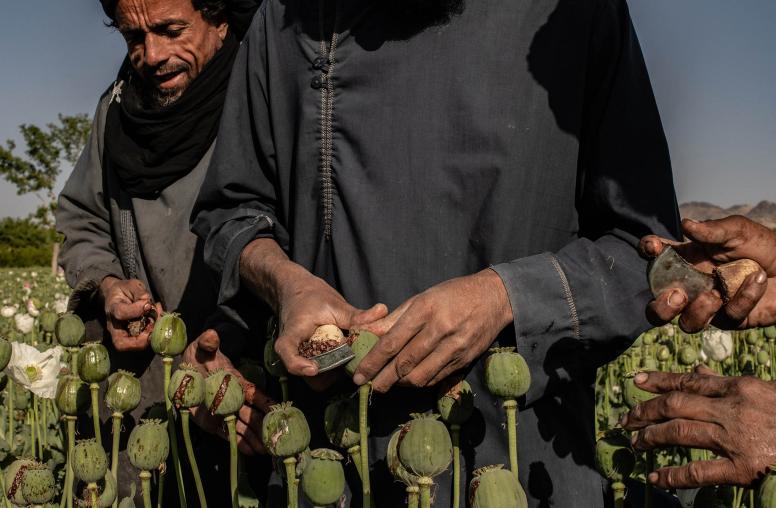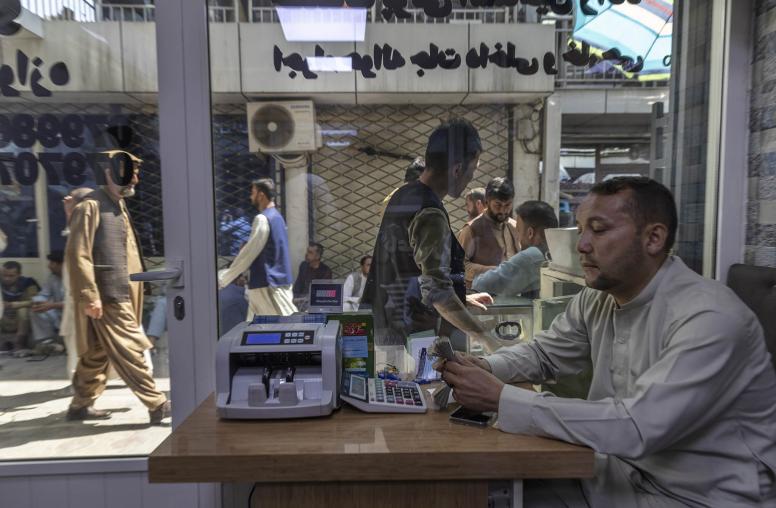U.S. Withdrawal from Afghanistan: End to an Endless War?
The September pullout will change the calculations of the Afghan negotiating parties and could lead to a recharged civil war.
President Joe Biden formally announced on Wednesday that the United States will withdraw troops from Afghanistan by September 11 of this year, the 20th anniversary of the al-Qaida attacks that led to the U.S. overthrow of the Taliban. The decision comes a month after U.S. Secretary of State Antony Blinken looked to jump-start the moribund intra-Afghan peace talks in Doha, Qatar with a sweeping set of proposals. Although the withdrawal would mean an end to America’s longest war, the implications for Afghanistan’s hard-won progress are immense and many fear the possibility of a rejuvenated civil war after U.S. troops leave.

USIP’s Afghanistan experts examine what the withdrawal means for the peace process, what’s at stake for Afghans and how the troop pullout will impact the strategy of the Taliban, Afghan government and regional actors.
What impact will the extended U.S. withdrawal date have on the peace process?
Worden: Biden’s announcement of the U.S. troop withdrawal this year turns the existing peace process on its head by fundamentally changing the calculations of the Afghan negotiating parties and the neighboring countries who support them. The new policy decision explicitly removes the conditions on the presence of U.S. troops that are in the February 29, 2020 U.S.-Taliban agreement. Namely, that Taliban counterterrorism guarantees, direct negotiations with the Afghan government, discussion of a cease-fire and the withdrawal of U.S. troops are “inter-related.” Now the number one goal of the Taliban — the complete removal of U.S. troops — is likely to be achieved without a political settlement among the Afghan parties to the conflict and without a lasting cease-fire.
This turn of events gives the Taliban significantly more leverage to negotiate favorable terms of a return to a share of power in the Afghan government. The unconditional troop withdrawal also creates a risk that both the Taliban and the Afghan government will want to test their military strength in the absence of U.S. and NATO ground troops — leading to a more brutal civil war.
It remains to be seen whether a high-level peace conference that was just scheduled for April 24 in Istanbul will proceed. Taliban spokesperson Mohammed Naeem on Tuesday said, “Until all foreign forces completely withdraw from our homeland, the Islamic Emirate [as the Taliban refers to itself] will not participate in any conference that shall make decisions about Afghanistan.” Nevertheless, the Afghan parties and the broader region should recognize that a political settlement of the conflict is needed to avoid a net loss for them all. The sooner that negotiation begins, the less hardship there will be.
The Taliban will face fierce resistance from Afghan government forces still funded by the United States as well as militia forces who fear a return of Taliban atrocities against ethnic minorities if they try to take power by force. Regional neighbors do not want a return to full Taliban rule or the lawlessness and refugee flows that would emanate from a ramped-up civil war. Therefore, an intra-Afghan peace process is still necessary and the talks that began in Doha remain the best foundation to build upon. More active mediation by the United Nations and pressure from regional countries to condition future cooperation on responsible negotiations may help to keep the Taliban and the Afghan government at the table.
How can we expect the Taliban and Afghan government to respond and how will this impact their negotiating strategy in peace talks?
Walsh: The Taliban’s public reaction lamented that the United States will not meet the prior deadline to withdraw troops by May 1. As noted above, their spokesperson declared they will not discuss the political future of Afghanistan until all foreign troops have left — if it holds, this is an ominous stance for the peace process. It’s likely, however, that Taliban leaders already understood that U.S. troops would not leave so soon and are pleased at President Biden’s unequivocal statement that they will in fact leave in September. The main question for the Taliban now is whether to continue peace talks to head off a post-withdrawal crisis, or to double down on the battlefield when the Afghan government seems vulnerable. Different Taliban leaders fall on different sides of this question, but all will feel emboldened by the U.S. announcement.
Opinions also vary on the Afghan government side. President Ashraf Ghani expected this decision eventually; for all its drawbacks, he may prefer it to the United States pressing him toward an unfavorable (in his view) agreement with the Taliban. The president’s team projects confidence that Afghan troops can hold the line against the Taliban, though they may harbor private doubts. Their main focus may now shift to hardening the republic’s defenses and shoring up international financial assistance.
Only a few other Afghan leaders have yet reacted publicly — presidential runner-up Abdullah Abdullah called for renewed peace efforts, while Afghanistan’s parliament speaker said the move was premature. A sense of abandonment or betrayal is likely among the larger cohort of Afghans who have led, or benefited from, the post-2001 republic. Behind the scenes, many such leaders have for years pursued safe landings abroad in case of a drastic deterioration inside Afghanistan. This trend may accelerate significantly in the coming months.
After four decades of war, what’s at stake for Afghans with potential for a U.S. withdrawal absent a peace agreement?
Ahmadi: In short, everything is at stake — all the hard-won progress and gains of the last 20 years. From the rights of women and ethnic and religious minorities, to press freedoms, to education and democratic gains, much hangs in the balance.
Afghan women and girls, in particular, have a lot on the line. They have made huge gains in education, their interests are increasingly incorporated in government decision-making processes and they play critical roles in the country’s civil society and economy. For their part, the Taliban’s approach and treatment of women has not fundamentally changed. For example, in areas under their control, women are not allowed to work outside their homes or go outside without a mahram (a blood relative) and girls’ education is restricted to sixth grade. NGOs have been warned against employing women and instructed to suspend women empowerment projects.
Leaders of religious and ethnic minorities have already started arming men and women to fight if the Taliban regain control of the entire country or their areas. After four decades of conflict stretching back to the 1979 Soviet invasion, a recharged civil war is likely unpreventable. This would inevitably lead to mass migrations and internal displacement.
On the economic front, investors will most likely pack up and leave if the environment is unsuitable due to spiraling instability and Taliban-imposed restrictions. Afghans experienced the Taliban’s draconian rule in the 1990s — after 20 years of progress, few want to return to those days.
How could the Biden administration’s decision impact regional actors’ posture toward the peace process?
Olson: The immediate temptation for regional actors will be to seek allies within Afghanistan who can serve as proxies to advance their interests as U.S. forces withdraw. This dynamic is likely to intensify the conflict. That said, the Biden administration retains points of leverage, including future assistance packages to Afghanistan and the admittedly variable desire of the neighboring states to maintain good relations with Washington. Moreover, most regional states do not favor the return of the “Islamic Emirate” of the 1990s (since many face domestic threats from Islamists) even if they are prepared to accept Taliban dominance of a new political dispensation.
By making clear that any significant reconstruction effort in Afghanistan will be contingent on preservation of the past 20 years’ gains (most importantly, women’s and minorities’ rights), the United States can push the region to deliver a concerted message to the Taliban that a return to the 1990s will be unacceptable and only lead to a prolongation of the conflict. The goal should be to modify Taliban behavior as it becomes a more dominant force to make clear that the movement needs to negotiate with other Afghans and accommodate the changes in Afghan society that have taken place over the past two decades.



